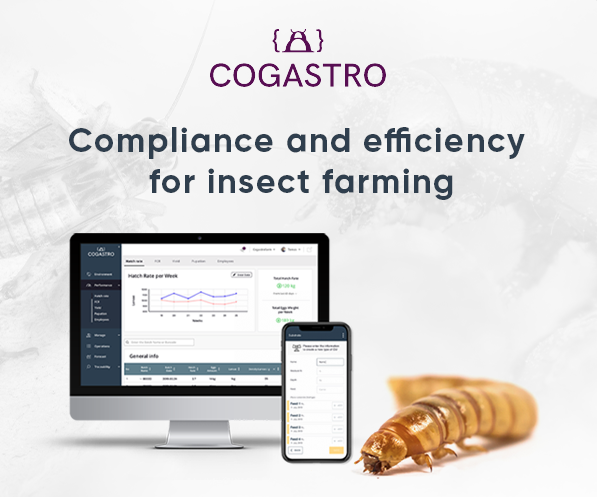This summer has been eventful, but I’ve been traveling less than usual this year, mainly in SE Asia. There are events every month around the world it seems like, and although I’d love to be at all of them, there’s been plenty to do right here in my current home region.
And in many ways, SE Asia is still the epicenter of the edible insects industry. Yes, companies in Europe make the most news headlines, but in terms of the quantity of startups, research projects, and smallhold farmers across the region, Asia still seems to be producing (and consuming!) on a world-leading scale.
ECONOMIST FEEDING THE FUTURE CONFERENCE
I had the opportunity to attend an event in Singapore put on by The Economist, focused on general agriculture in Asia. I was there representing AFFIA, the Asian Food & Feed Insect Association.
While insects did come up in several panel discussions – and were referred to both positively and negatively – the primary aim was to discuss challenges and solutions related to SDG’s (Sustainable Development Goals) and overall food production in the region.

A few things really stood out to me, which statistically are related to general agriculture, but which in my experience can and do apply to insect agriculture as well:
- 80% of the food in the developing world is produced by smallhold farmers, who are at risk from many factors
- Women make up 43% of agricultural workers globally, and more than 50% in the developing world, but there is very little funding or support (the problem in many cases is that the ministry of agriculture says, “that’s a problem for the Women’s Ministry“)
- The average age of farmers in rural areas is now over 60, as low profitability is driving young people to abandon their land and move to urban areas; in Japan, there is a program to actually pay young people to work in agriculture
- Only 4% of development aid goes toward agriculture, despite 75% of people in rural areas being dependent on ag
- While great strides have been made over the past few decades to eradicate hunger, things have stalled and hunger has actually been increasing the past 3 years
- Technology and access to markets (increasing farmer profitability, removing the monopoly that middlemen usually have) are seen as important potential solutions for agricultural development
- Along with Singapore, one water expert made the case that Phnom Penh, Cambodia (my home city the past few years) has the best water management system in the world – something I’d heard before but was skeptical, so really interesting to hear it again from him
There was also plenty of discussion related to farming co-ops, which I’ve been a big fan of for several years. Dr. Yupa Hanboonsong (Khon Kaen University) has made the case previously for the positive benefits that cricket farming co-ops can have in Thailand and the rest of the region, and it’s something that I believe is still overlooked, and will continue to draw attention to as a solution for insect farming.
SCALING AND BENEFIT FOR ALL
On the topic of general ag, though, panelists pointed out that corporations usually have a vested interest in their own benefit, but not necessarily in the good of the local people.
And yet, when agricultural work is done in rural communities, conflict goes down and productivity goes up. As this happens, agriculture becomes ‘cool’ again, and more appealing to the younger generations.
A constant problem though is that these small pilot projects tend to not scale – because they’re run by NGO’s and are not designed to scale, they’re just designed to make an impact / test a theory on a small level in one community, for example.
To truly make a difference, pilot programs need to be designed with scalability in mind from the outset.
REALISTIC VIEWPOINTS RELATED TO ALTERNATIVE PROTEIN
Another topic that took a quite pragmatic approach in the outlook, was alternative protein – most speakers at the event believe that there’s a place for alt protein and that it can play a major role in combating the effects of climate change, but that it’s highly unrealistic to think it will completely replace livestock even in the course of this century.
Chair of this panel just called the “self-righteous” view from rich westerners that the developing world shouldn’t eat meat, “immoral”. Like I’ve been saying, steps in the right direction (insects as feed), not utopian fantasy (whole world going vegan). #EconFTF
— Entovegan (@Entovegan) July 26, 2019
That comment and line of thinking I know are really difficult for staunch vegans to accept, but it’s real. If you live in San Francisco, or London, or Portland, maybe being vegan is practical and affordable for you.
But it’s not, and likely won’t be in our lifetimes, for literally billions of people around the world. BILLIONS OF PEOPLE. Thus, we need to find solutions for climate change and food security that actually have a chance of happening.
So stop with the Eurocentric view that people (especially in the developing world) who eat meat are somehow evil, and realize that solutions for a better planet – for earth, for animals, AND for people – need to be implemented in functional, practical ways.
Which is why even the most hardline vegans should support insect protein as a replacement for meat, as I’ve been repeatedly saying for a long time now. I appreciated that the sentiment at this conference was very much in favor of both sustainable solutions and supporting smallhold farmers – and every report that has come out the past couple of years highlights the need for solutions which benefit rural development.

Legit snacks (they had Beyond Meat burgers too)
Livestock, it was pointed out, are an integral component of circular closed loop systems on smallhold farms. While we can certainly discuss the environmental challenges presented by livestock – especially cattle, but sheep and goats as well – we must take into account their role in rural agricultural communities, and seek solutions which will be both sustainable and functional in those areas.
Other main topics which were discussed included changing food trends, addressing issues of childhood nutritional deficiencies (which even in wealthier areas are more related to marketing of unhealthy foods, than healthy food availability…), business development for the agricultural sector (teaching farmers business skills so they are more independent), more effective scalability (improving the benefits of the touch points, not just reaching them for the sake of reaching them), and more.
A WORD ON INDUSTRIAL VS SMALLHOLD FARMS
Now, while there was much conversation related to the topic of smallhold farmers in the developing world, some panelists did urge caution in “romanticizing” smallhold farms too much, noting that large corporations and even alternative protein do not necessarily mean exclusion of rural development from the process.
One VC whose fund invests in alt protein gave the example of a company in Singapore producing vegan “meat” replacement based on jackfruit. While the company is definitely an alternative protein for the plant-based market, they are sourcing their jackfruit from smallhold farms all over Sri Lanka and Cambodia.
The reality is that this type of alternative use for jackfruit has actually improved the sales and economic situation of those smallhold farmers, in a new and novel way they would not have had without this type of venture capital backed innovation.
For me personally, my support over the years of smallhold farmers isn’t a criticism of the large companies in the insect industry. We need both! The larger companies tend to be well-funded and have the ability to do in-depth R&D and create innovative solutions, which can then benefit the industry as a whole.
And at this nascent stage, there is definitely room for everyone. To even make a dent in 1% of the fishmeal or soymeal market, we’ll need to produce millions of tons of insect protein each year. We’re nowhere near that – and I believe that over the coming decade(s), there will be distinct positioning in the consumer food and industrial feed markets for both large-scale industrial production companies, and co-ops with hundreds or even thousands of smallhold rural insect farmers.
My main concern has been and continues to be that in the rush to profitability, most western entopreneurs are ignoring the developing world, as though it’s full of dirty insects that can’t compare to bugs farmed in a sterile environment (not true), or that it’s impossible to get consistent supply (also not true), or a variety of other incorrect assumptions. And that’s a mistake.

Ironic parking situation out in front of the hotel where the Feeding the Future event was taking place – check out my instagram write-up
Look, I’m a bit of a paradox – I’m fully in support of free markets and believe in the power of capitalism as the real catalyst bringing people out of poverty.
However, I also have a soft spot in my heart for the underdog (it’s a sports term, if it doesn’t translate well) and I want to give back to people less fortunate, and see them succeed through their own initiative.
So I do understand why insect companies in the west are seeking full vertical integration – waste management, nutrient upcycling, creating their own products from their own farmed insects, keeping it all in-house. I get that.
But there are also THOUSANDS of insect farmers able to farm with the same efficiency – and at a better price still, considering the overhead western industrial farms have – and they’re being overlooked as a source.
Yes, there are NGO’s and some really noble projects happening with insect farming on a small scale in Africa, Asia, and even Latin America. But for the most part, they are not scalable solutions yet.
What I took away from the Economist event was that this is not an issue unique to the insect industry – it’s common across ALL agricultural sectors.
But considering the majority of the population growth and wealth accumulation is going to happen in developing countries over the rest of the century, countries which today are still considered “poor”, well, looking at agriculture and insect ag specifically, I think it would be a missed opportunity to ignore the potential for farming co-ops and smallhold farming solutions related to Entomophagy.
This post is a bit long now so I’ll follow up with the Kasetsart AFFIA event and Thaifex Future Food Startup Zone writeup in another post!

Can you find me? The question was if the WTO will conclude with a positive agreement in the next 10 years…as you can see, most are pessimistic that will happen.




